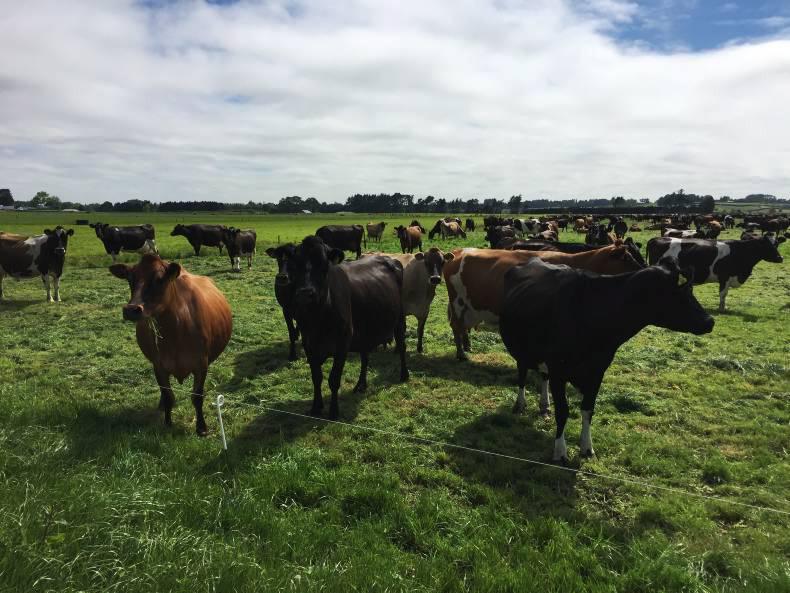Henry and Nicole Hendricks are milking 320 cows on a 63ha farm of peaty land just outside of the city of Hamilton in the Waikato region – the dairy heartland of New Zealand.
With 50 youngstock grazed on the farm for part of the year, the stocking rate is close to 5.5 cows per hectare, but the Hendricks still manage to winter all their cows on the farm, with grass in the diet every day.
Supplement is purchased in, with 1.5t of maize dry matter fed per cow in addition to about 500kg of meal fed in the parlour. The rest is made up of grazed grass. Maize is fed on a feed pad. The cows are on/off grazed during the winter.
Production per cow is an impressive 550kg of milk solids (MS). The secret? Growing and utilising huge quantities of grass.
The farm has been measured by Dairy NZ to be growing 25t/ha per year on average and the herd is utilising almost 20t/ha of this.

Attention to detail
Henry’s attention to detail is unique and is probably key to the system. He has his own way of doing things. Fertiliser is spread on each paddock 18 times per year, with nitrogen (N), phosphorus (P), potassium (K), sulphur and lime being spread in each application. In total, over 200kg of N, 160kg of P and 160kg of K and 700kg of dolomite lime is being spread per hectare per year.
Herd fertility is superb, with half of the crossbred herd calving in five days. Empty rates after 12 weeks are consistently less than 5%.
Today, the herd was milking 2.16kg MS/cow/day, on 1.5kg of maize and 2kg of meal per cow. Breeding started 24 days ago and there are six cows left to be submitted. Body condition score was 3. The average age of the herd is eight years old.
In terms of costs, Henry’s farm working expenses are NZ$3.82/kg MS (€0.16 c/l). With the Fonterra payout forecast at NZ$4.60 (€0.19 c/l) for the 2015/2016 production year, this will be one of the few farms in New Zealand to continue to make a profit.
Key take home messages – anything is possible with superb management. The way Henry manages the fertiliser spreading is unique and probably worthy of further consideration if, as he says, it grows him more grass than just spreading the same amount of P and K twice a year.
Weather
Unlike in Ireland, the weather in New Zealand is beginning to heat up after a colder than normal spring. Rainfall over the last month in the Waikato region has been lower than normal and the meteorologists here are predicting a long dry summer, in line with the El Niño effects.






 This is a subscriber-only article
This is a subscriber-only article














SHARING OPTIONS: